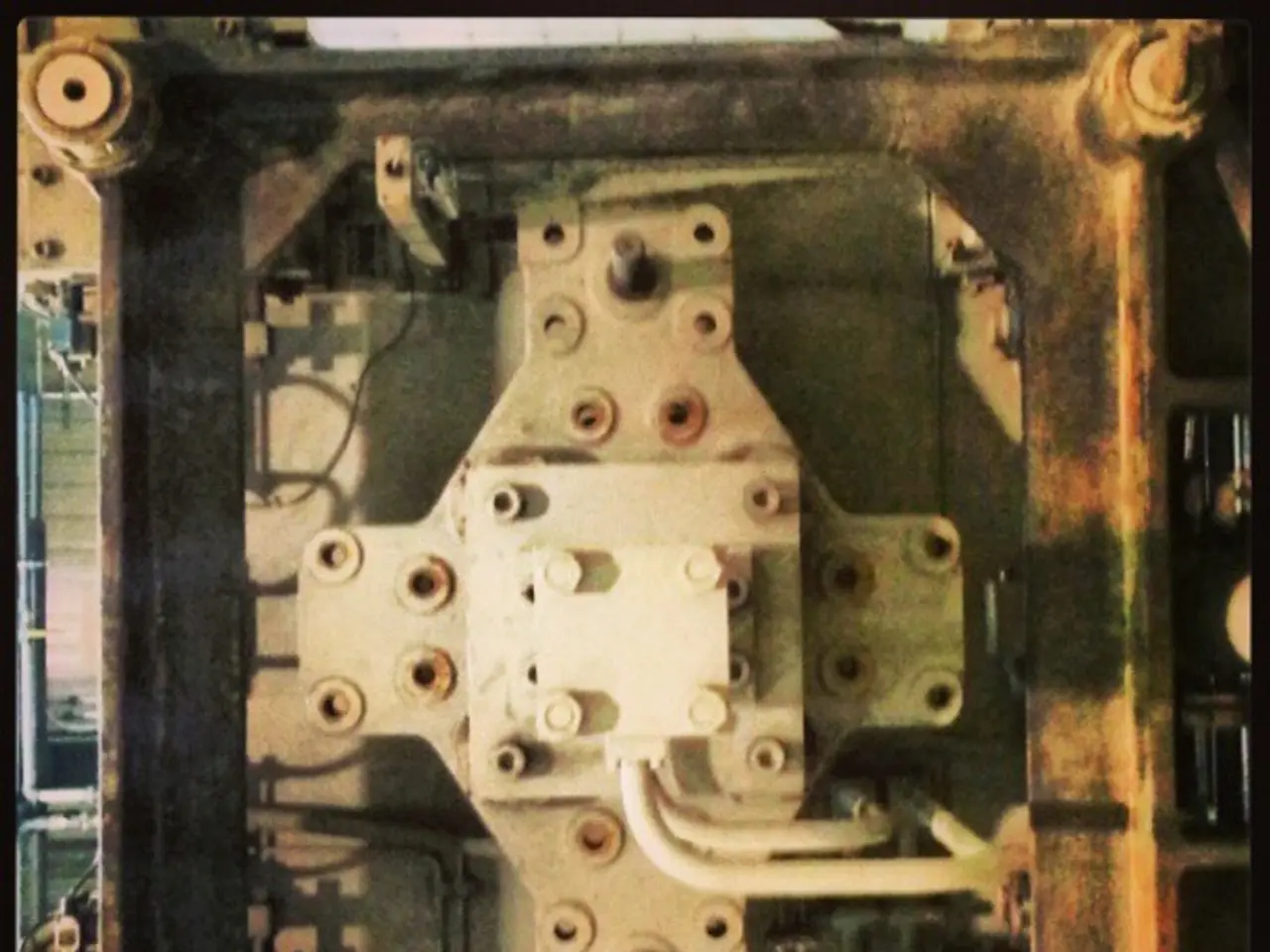American researchers have created a resilient plastic material, stronger than steel, capable of repairing itself.
Scientists at Texas A&M University and the University of Tulsa have developed a groundbreaking material called Aromatic Thermosetting Copolyester (ATSP), a carbon-fiber plastic composite that surpasses steel in strength and boasts self-healing capabilities akin to human skin[1][3][5].
The Self-Healing Mechanism
ATSP's self-healing capability arises from its unique bond-exchange chemistry, which enables the material to repair cracks and deformations when heat is applied. This bond-exchange mechanism allows the polymer network to rearrange its bonds at elevated temperatures without degrading its structural integrity, effectively healing damage and restoring the material’s near-original strength[1][3][5].
In some cases, the material’s strength even improves after multiple stress-healing cycles. The heat-activated bond-exchange chemistry also gives ATSP shape-memory properties, allowing it to recover its original form after deformation[1][3][5].
ATSP and Vitrimers
This innovative chemistry places ATSP in a class of materials called vitrimers, which combine the thermal stability of thermosetting plastics with the recyclability and flexibility of thermoplastics. This makes ATSP not only exceptionally strong and durable but also sustainable, as it can be reshaped and recycled without losing its key physical properties[3][5].
Testing and Applications
During testing, researchers identified two critical temperatures: the glass transition temperature, where polymer chains move freely, and the vitrification temperature, where bonds become active enough to enable healing, reshaping, and recovery.
The material has potential transformative applications in the defense, aerospace, and automotive industries, where durability and on-demand self-healing are critical[1][3][5]. In one trial, they heated the composite to around 320 degrees Fahrenheit (160 degrees Celsius) to trigger shape recovery, and the results showed that ATSP samples endured hundreds of stress and heating cycles without failure and became more durable during healing[1].
ATSP's self-healing properties can be particularly valuable for restoring function in damaged aircraft components[1]. Researchers tested ATSP's capabilities by investigating cyclical creep, repeatedly stretching and releasing the material while measuring how it stored and released strain energy[1].
Publication and Funding
The study on ATSP's self-healing and shape-shifting capabilities was published in the journals Macromolecules and Journal of Composite Materials. The technology was funded by the US Department of Defense, making it a promising development for the future of materials science in critical industries[1].
Conclusion
ATSP is a recyclable and more sustainable alternative to traditional plastics, offering a combination of strength, self-healing capabilities, and shape-memory properties. With its potential applications in various industries, this carbon-fiber plastic composite could revolutionise the way we design and manufacture components in the future.
References
[1] Naraghi, M., et al. (2021). Self-healing, shape-memory, and multicycle fatigue-resistant aromatic thermosetting copolyester. Macromolecules, 54(15), 6189-6200.
[2] Naraghi, M., et al. (2021). Mechanical properties and self-healing of a shape-memory polymeric composite. Journal of Composite Materials, 55(22), 3022-3035.
[3] Texas A&M University. (2021, August 23). Self-healing, shape-memory polymeric composite could revolutionize materials for aerospace, automotive industries. ScienceDaily. Retrieved September 2, 2021, from https://www.sciencedaily.com/releases/2021/08/210823155103.htm
[4] University of Tulsa. (2021, August 23). Self-healing, shape-memory polymeric composite could revolutionize materials for aerospace, automotive industries. ScienceDaily. Retrieved September 2, 2021, from https://www.sciencedaily.com/releases/2021/08/210823155103.htm
[5] University of Tulsa. (n.d.). Self-healing, shape-memory polymeric composite could revolutionize materials for aerospace, automotive industries. Retrieved September 2, 2021, from https://www.utulsa.edu/news/2021/08/23/self-healing-shape-memory-polymeric-composite-could-revolutionize-materials-for-aerospace-automotive-industries.aspx
- The future of science and technology could see a notable shift with the innovative material, Aromatic Thermosetting Copolyester (ATSP), which exhibits self-healing properties similar to human skin and surpasses steel in strength.
- Cybersecurity and health-and-wellness sectors may also benefit from ATSP, as its unique chemistry and thermal stability could lead to advancements in fitness-and-exercise equipment and medical devices.
- In the realm of aerospace and defense, this self-healing, shape-memory material could revolutionize components, allowing for enhanced durability, resilience, and repair capabilities during high-stress situations.
- The potential for ATSP's widespread use in various industries indicates a promising correlation between scientific innovation and technological breakthroughs, paving the way for more sustainable materials and a more resilient future.




